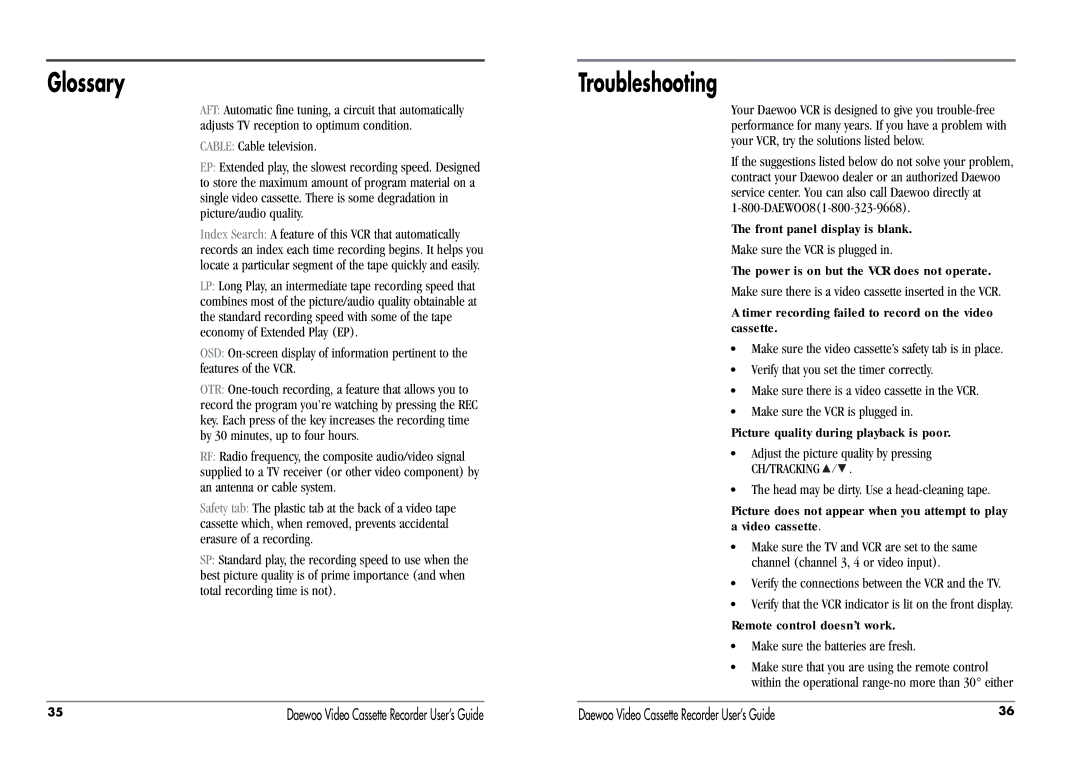
Glossary
AFT: Automatic fine tuning, a circuit that automatically adjusts TV reception to optimum condition.
CABLE: Cable television.
EP: Extended play, the slowest recording speed. Designed to store the maximum amount of program material on a single video cassette. There is some degradation in picture/audio quality.
Index Search: A feature of this VCR that automatically records an index each time recording begins. It helps you locate a particular segment of the tape quickly and easily.
LP: Long Play, an intermediate tape recording speed that combines most of the picture/audio quality obtainable at the standard recording speed with some of the tape economy of Extended Play (EP).
OSD:
OTR:
RF: Radio frequency, the composite audio/video signal supplied to a TV receiver (or other video component) by an antenna or cable system.
Safety tab: The plastic tab at the back of a video tape cassette which, when removed, prevents accidental erasure of a recording.
SP: Standard play, the recording speed to use when the best picture quality is of prime importance (and when total recording time is not).
Troubleshooting
Your Daewoo VCR is designed to give you
If the suggestions listed below do not solve your problem, contract your Daewoo dealer or an authorized Daewoo service center. You can also call Daewoo directly at
The front panel display is blank.
Make sure the VCR is plugged in.
The power is on but the VCR does not operate.
Make sure there is a video cassette inserted in the VCR.
A timer recording failed to record on the video cassette.
•Make sure the video cassette’s safety tab is in place.
•Verify that you set the timer correctly.
•Make sure there is a video cassette in the VCR.
•Make sure the VCR is plugged in.
Picture quality during playback is poor.
•Adjust the picture quality by pressing
CH/TRACKING ![]()
![]()
![]() .
.
•The head may be dirty. Use a
Picture does not appear when you attempt to play a video cassette.
•Make sure the TV and VCR are set to the same channel (channel 3, 4 or video input).
•Verify the connections between the VCR and the TV.
•Verify that the VCR indicator is lit on the front display.
Remote control doesn’t work.
•Make sure the batteries are fresh.
•Make sure that you are using the remote control within the operational
35 | Daewoo Video Cassette Recorder User’s Guide | Daewoo Video Cassette Recorder User’s Guide | 36 |
